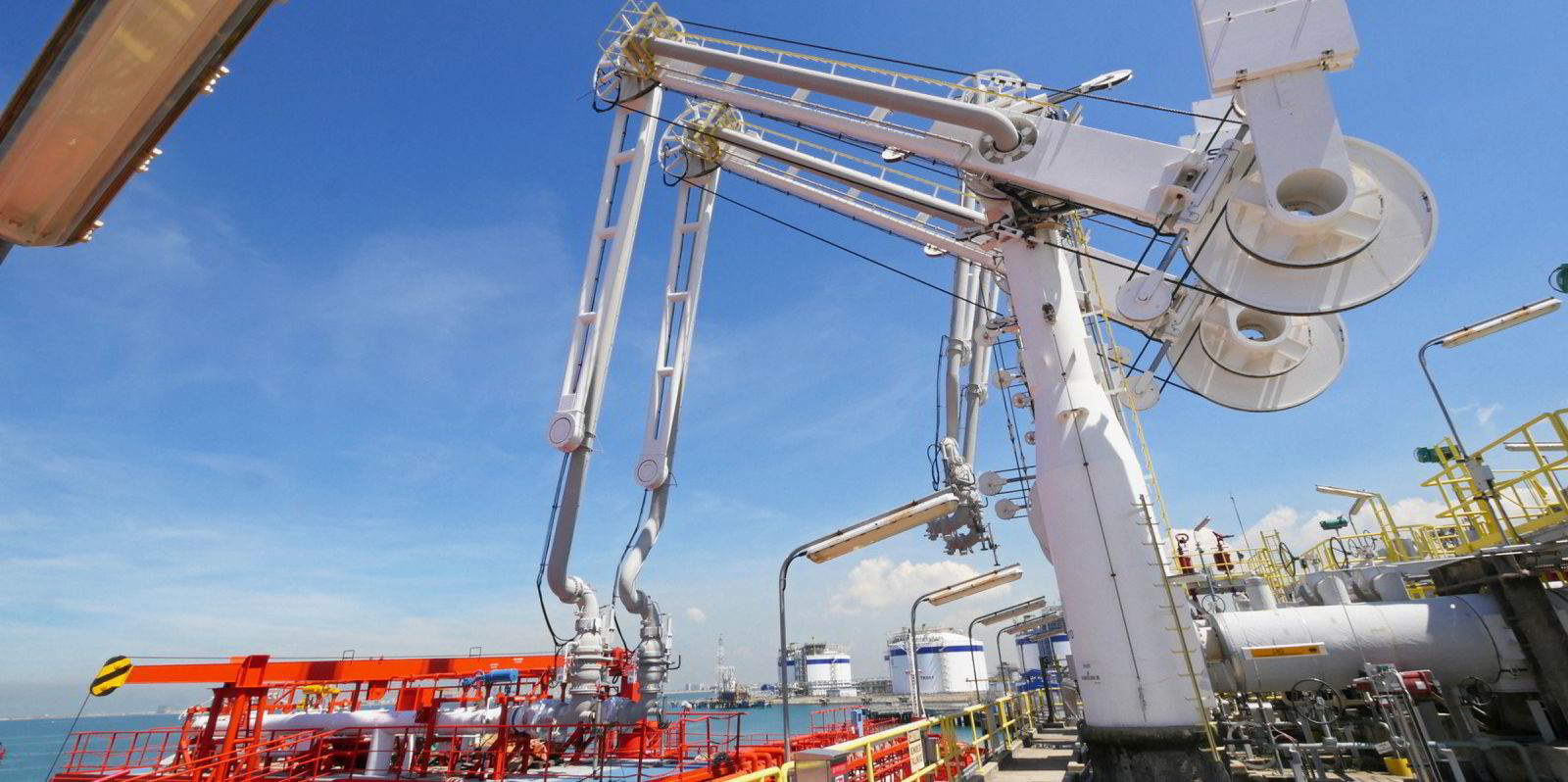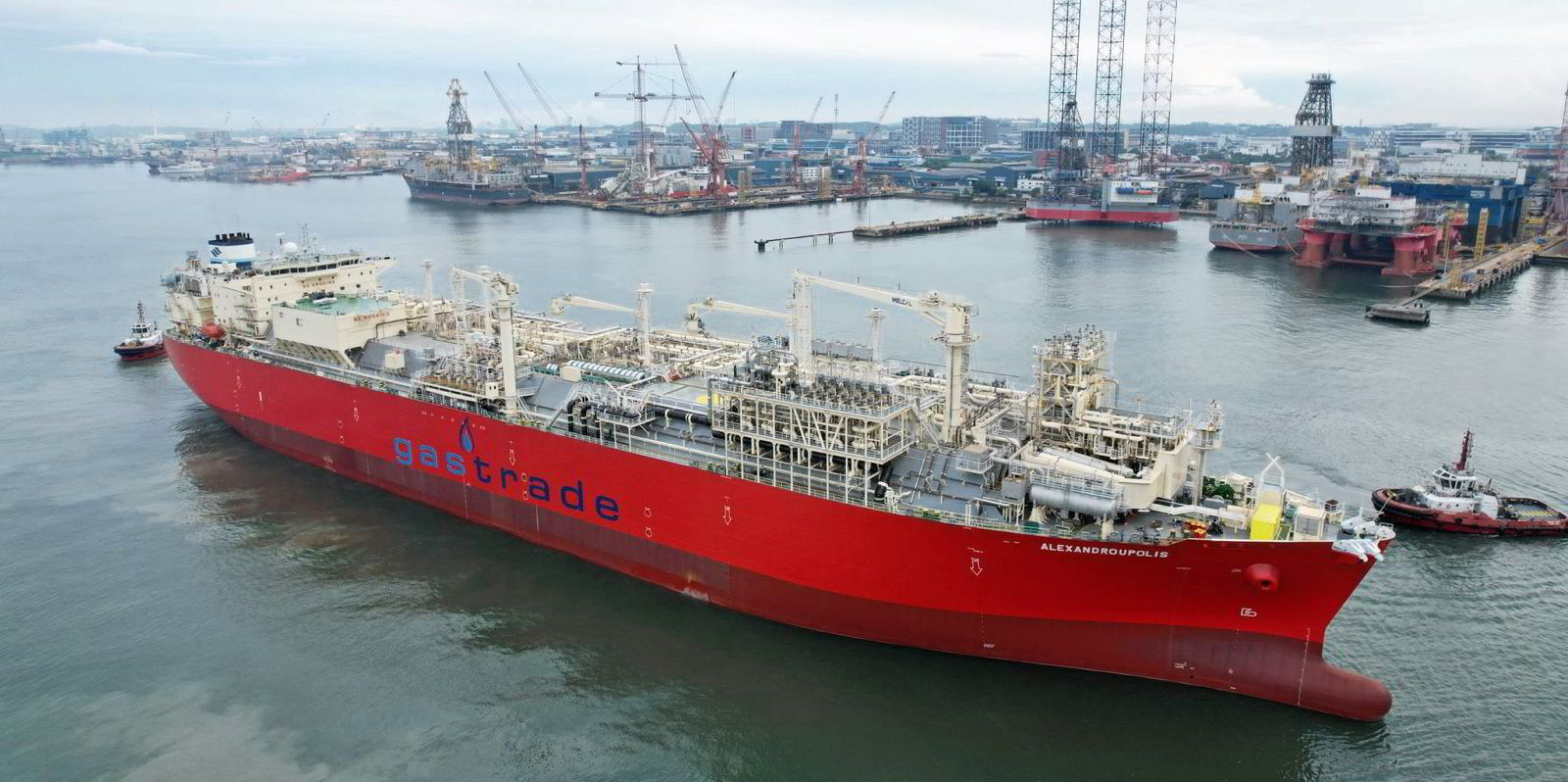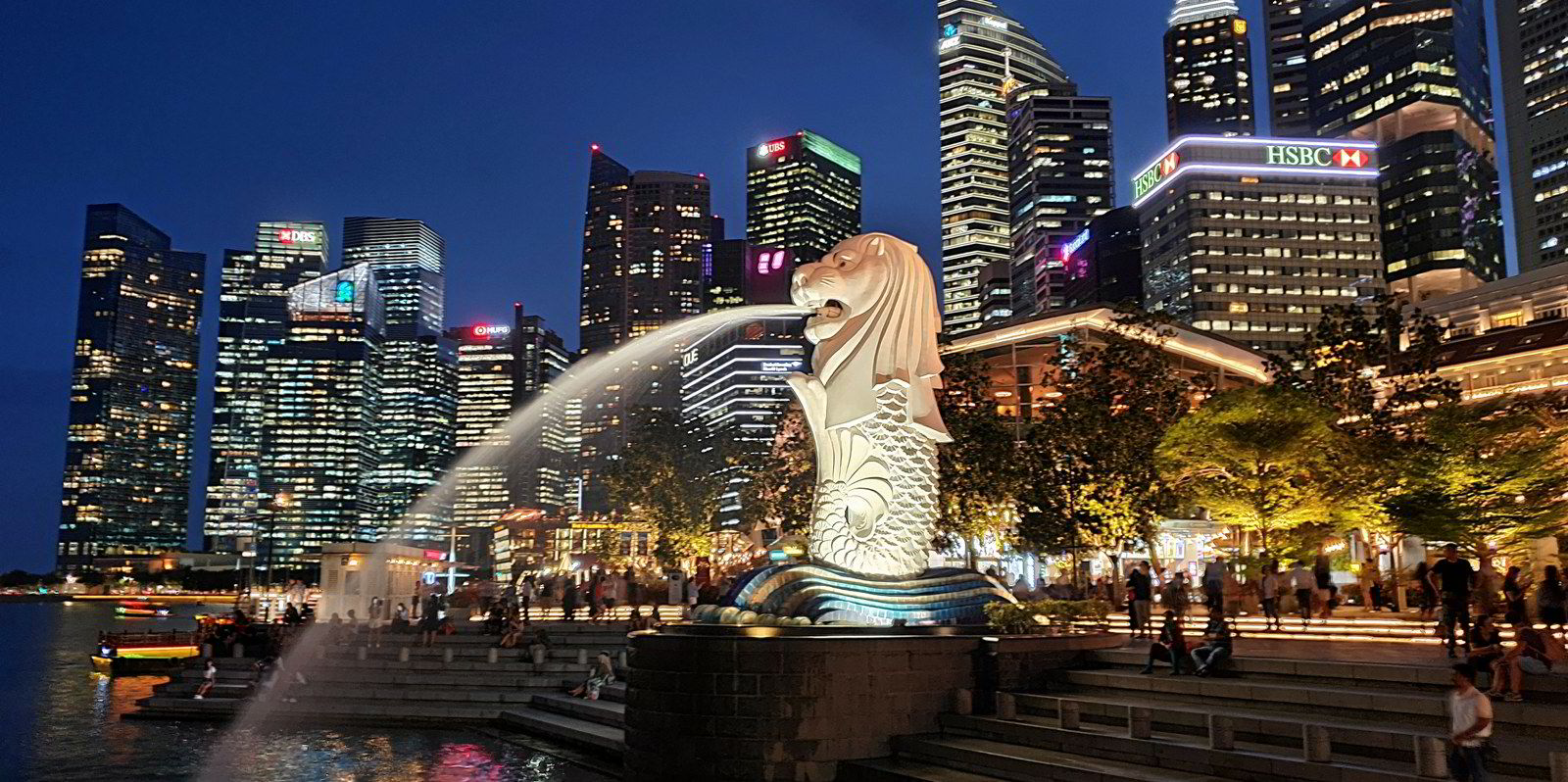LNG buyer Singapore is looking at two different design concepts for its long-planned floating storage and regasification unit-based second import facility as selected bidders are invited to join a tender process.
Those following the business said Singapore is considering acquiring what they described as a “ship-shaped” FSRU, which would have full seagoing capabilities. One mentioned that a unit capable of “quite high speeds” has been requested.
The second option is a self-propelled barge-based FSRU.
TradeWinds has been told that several shipowners have been going through a pre-qualification process for the business.
State-controlled Singapore LNG Corp (SLNG), which operates the country’s only existing land-based LNG import facility, is overseeing the job of acquiring an FSRU.
A spokesman told TradeWinds that the company has issued a closed tender for the planned FSRU.
“As part of due diligence, we had previously carried out an expression of interest process that was opened to a wider range of potential bidders, and we have invited selected qualified bidders from the EoI process to the tender,” he said.
“Various options are being considered and we will provide more details in due course.”
TradeWinds reported in September that Singapore was preparing to launch a formal tender process to acquire an FSRU — a project that has been in the works for several years.
In October, deputy prime minister and finance minister Lawrence Wong said Singapore was studying an FSRU concept for its second import terminal.
He said the planned unit will have a supply capacity of up to five million tonnes per annum and be connected to the grid.
He said SLNG is aiming to have it in operation by the end of this decade and admitted that the government was prompted to greenlight the project by the turmoil and uncertainties in the energy markets following Russia’s invasion of Ukraine in February 2022.
Greater flexibility
SLNG said the FSRU concepts offer greater flexibility in meeting the nation’s energy and sustainability objectives and could easily be redeployed to another location to work as a receiving terminal.
Singapore’s existing import terminal is on Jurong Island. It began operations in 2013 and has a peak send-out of about 11 mtpa but also offers other services including transshipments, LNG bunkering, truck loading and vessel gassing up and cooldowns.
Companies working on FSRUs have reported a rise in project interest following Europe’s heightened energy concerns in 2022, when most of the available regas tonnage was snapped up.
However, they also acknowledge that the bulk of projects still remain complex, often with several shareholders and state involvement, and they take time to put into operation.
Berths for newbuildings are in short supply. Excelerate Energy placed an order for an FSRU in October 2022, priced at $337m, and in its quarterly results briefing in November this year it said it is considering contracting a second unit.
Brokers said FSRU newbuilding prices will now probably be close to the $350m mark and the earliest delivery dates available will be in late 2027 or reaching into 2028.
The crush on slot space at shipyards is pushing interest towards conversions, which are seen as a cheaper option that can be brought to market more quickly.
But the two design concepts being considered for Singapore would imply a leaning towards a newbuilding.







